In this sketchbook, I explore the relationship between fabric, texture, and organic forms, taking inspiration from flowers, botanical structures and human anatomy. Each final piece is designed to transform the body, using hand-dyed textiles, intricate embellishments, and sculptural fabric manipulation to create movement and depth.
The Flower Project
This page explores floral painting techniques, using watercolour and fine liner to capture natural forms, structure, texture, and vibrancy. By layering delicate washes of colour with detailed linework, I experimented with both realistic and stylised interpretations of flowers.
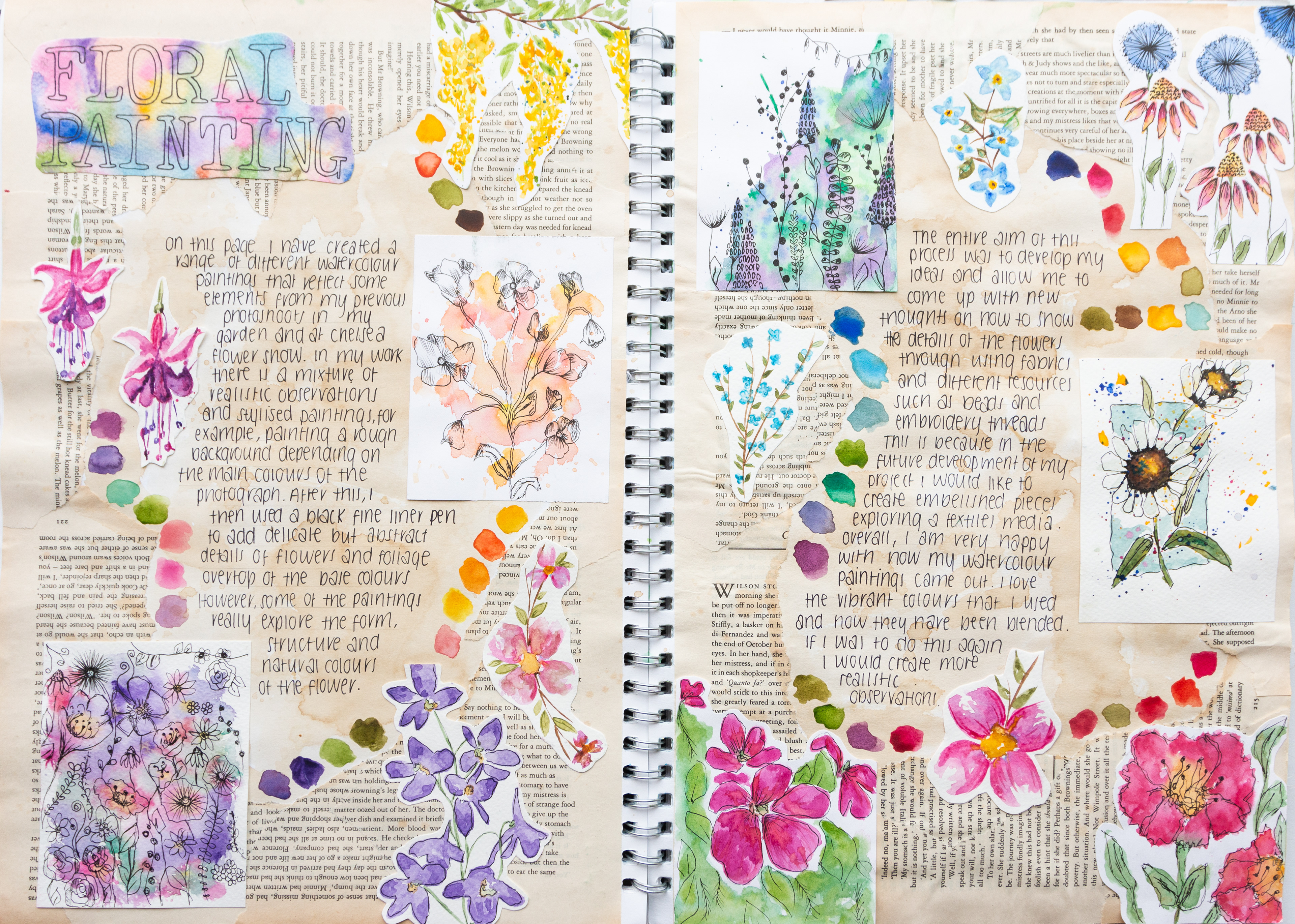
This page explores fabric manipulation and embroidery techniques to create floral-inspired textures and embellishments. Using layered fabric, free-motion embroidery, and hand-sewn elements, I experimented with different stitching styles, such as French knots and chain stitches, to build dimension.
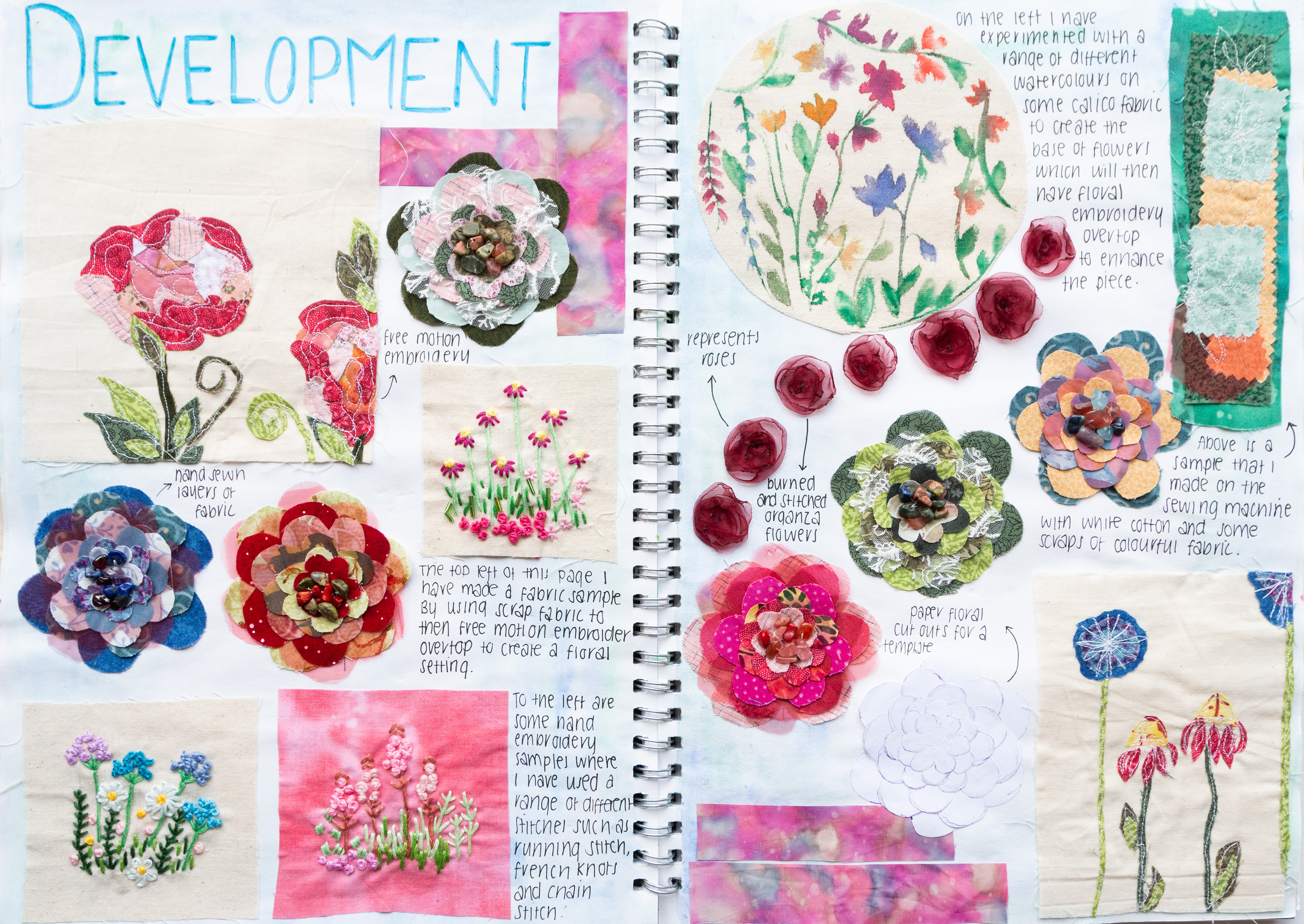
To the right is my personal response, where I have experimented with painting and embellishing a canvas to create an eye-catching and exciting wall hanging.
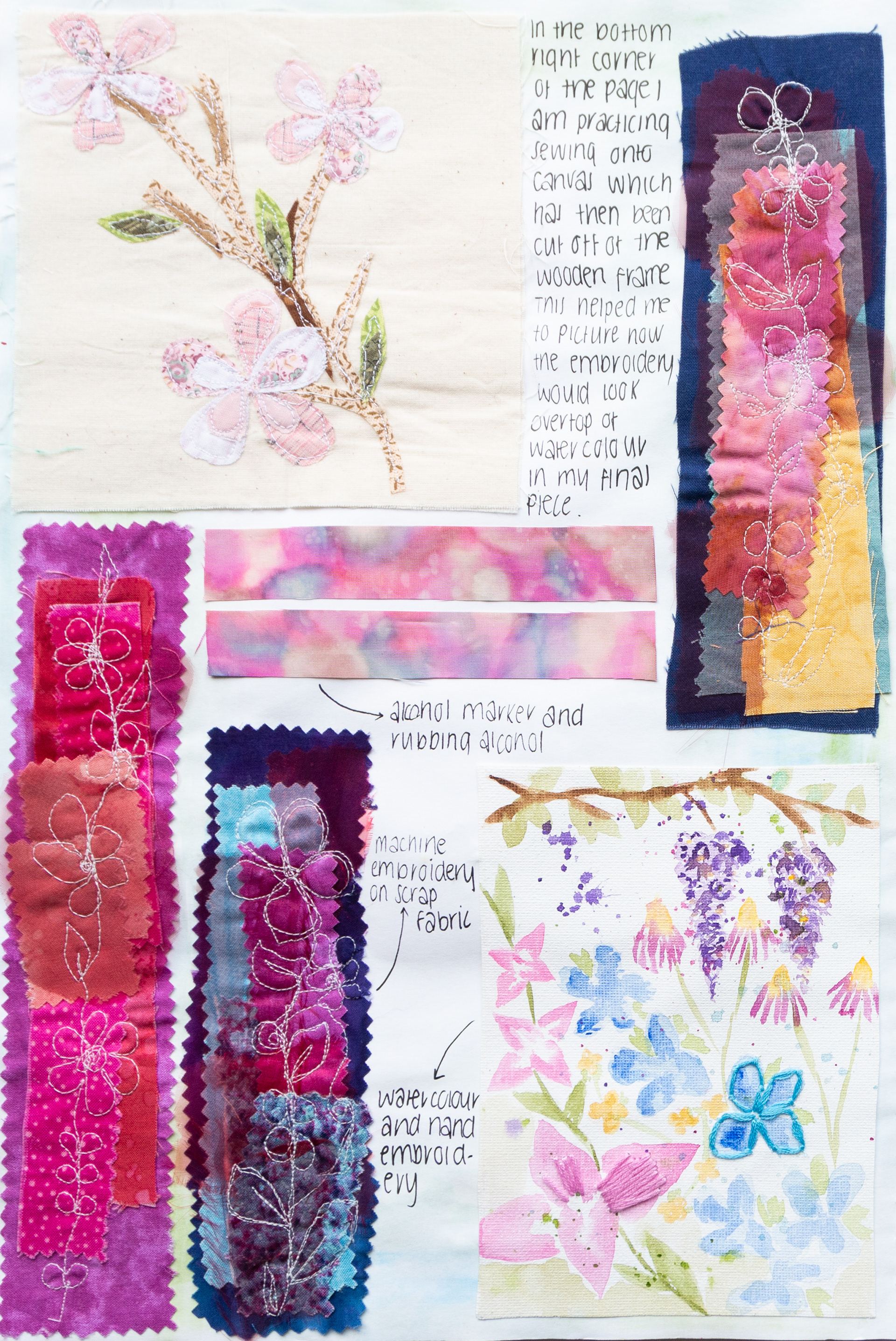
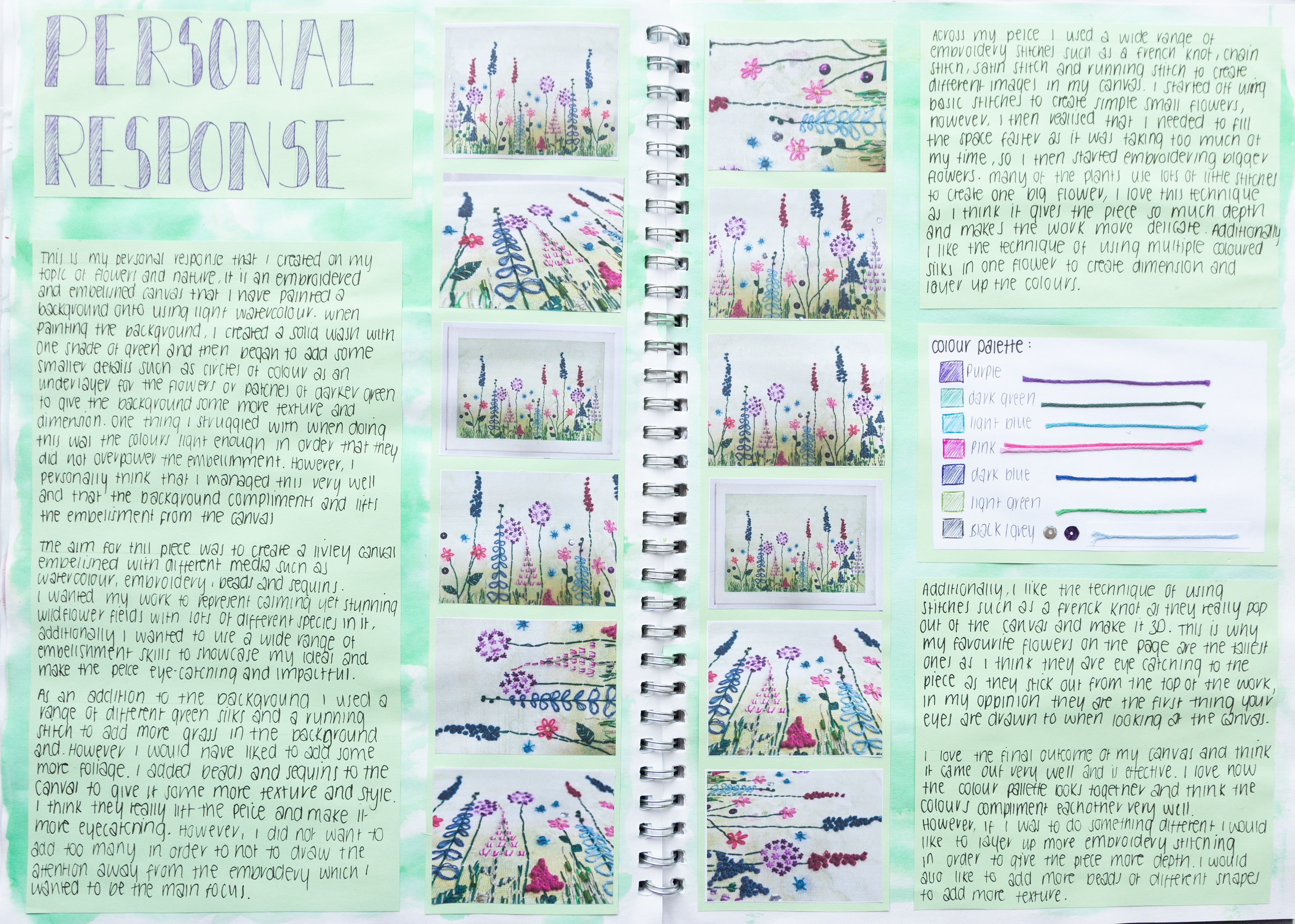
Ink and water experiments of calico fabric with some that have machine embroidery embellishment overtop.
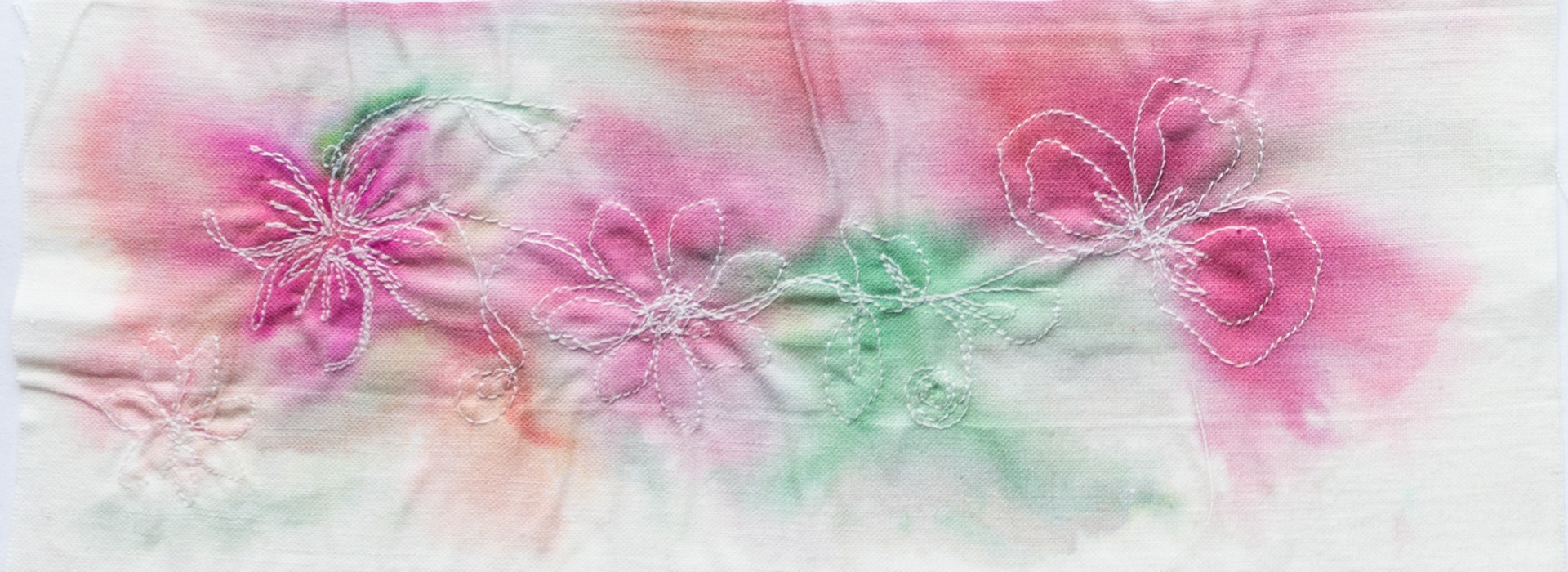
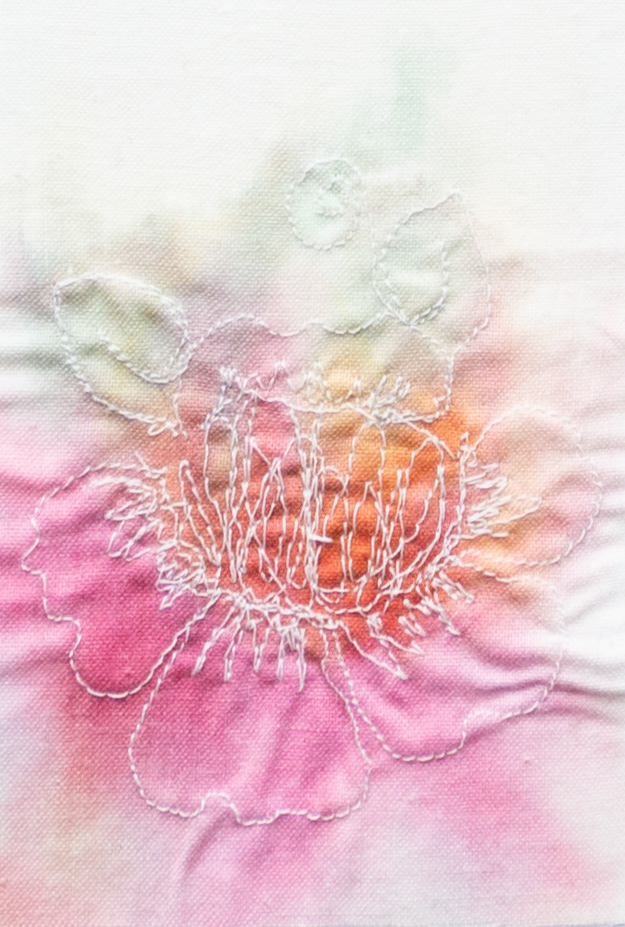
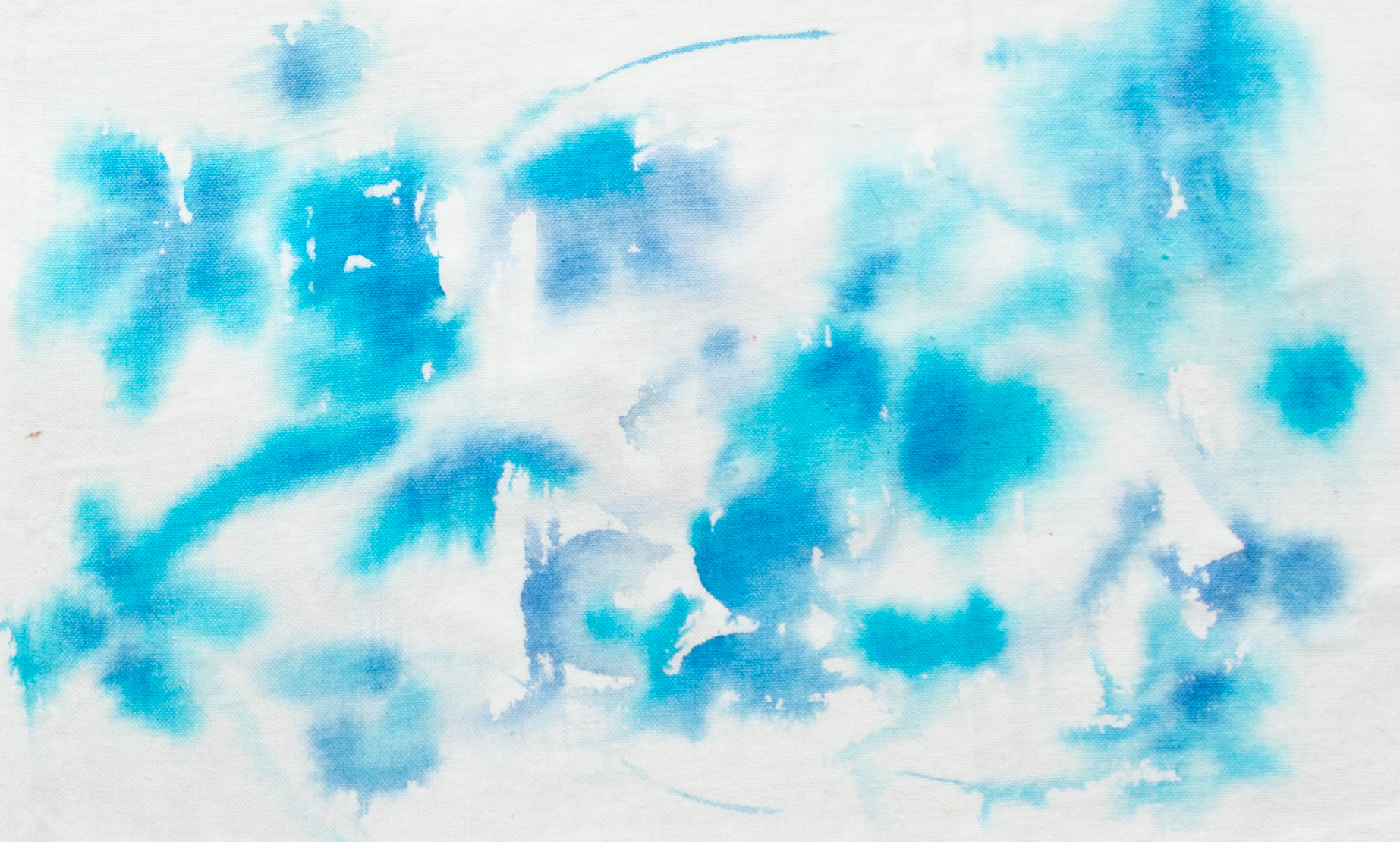
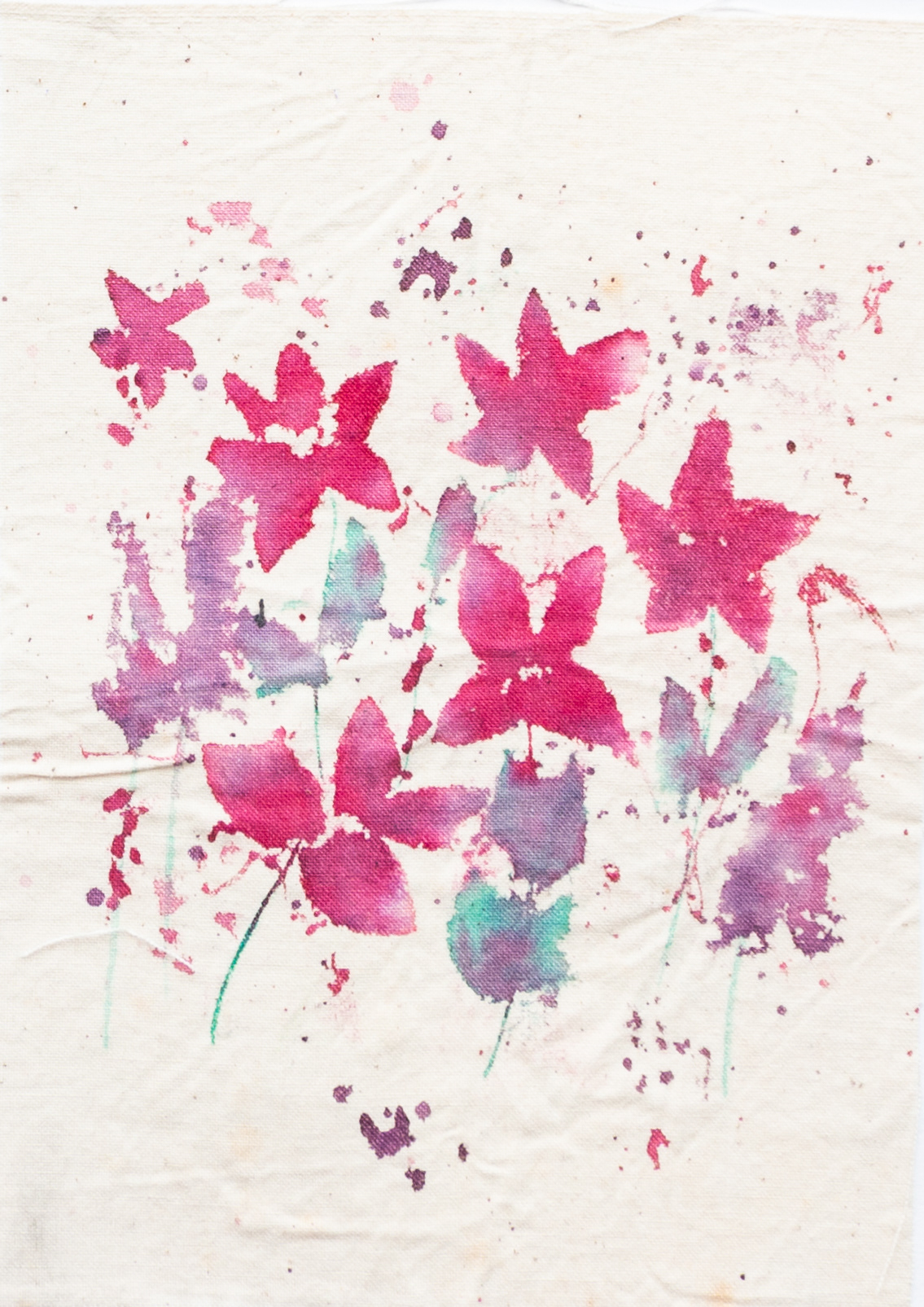
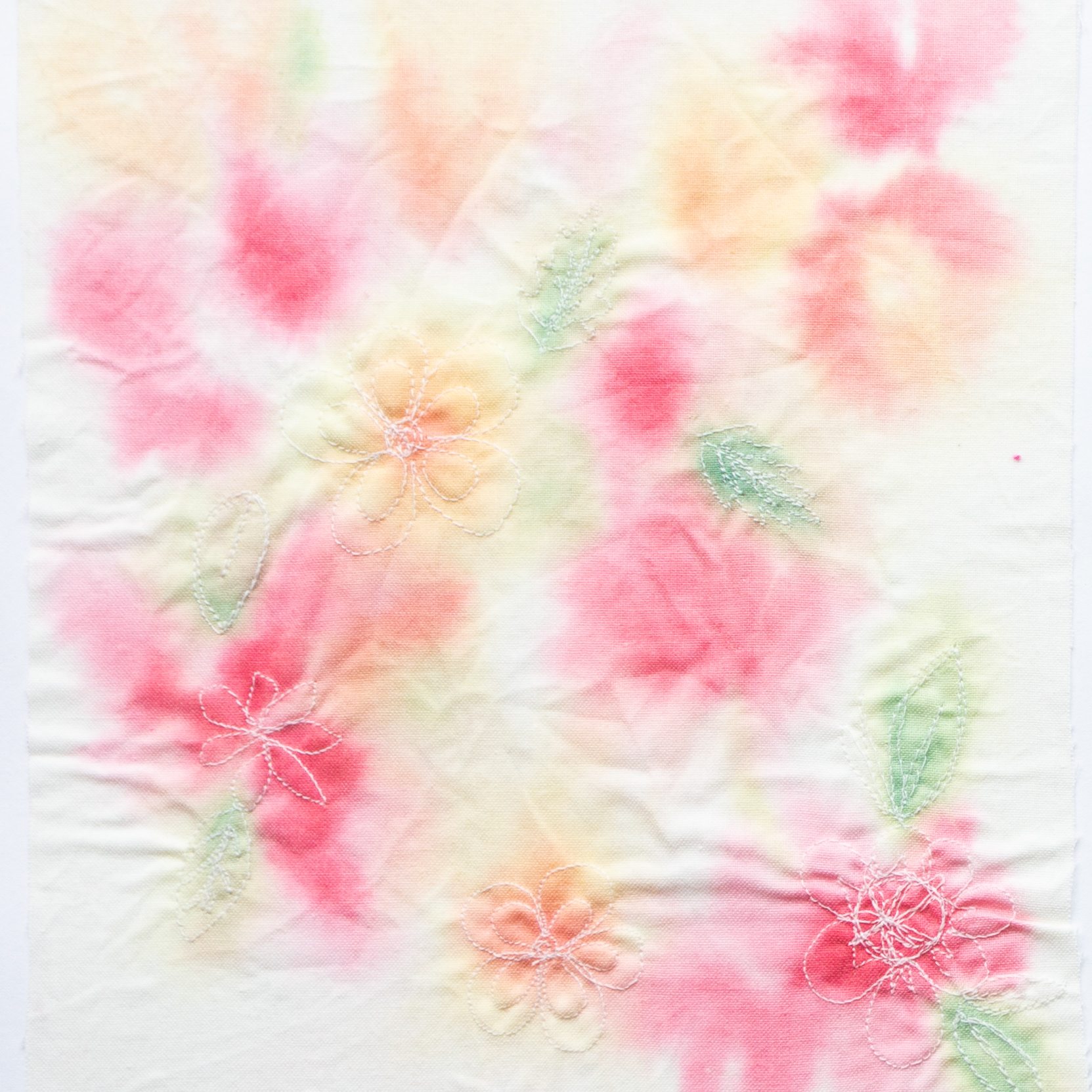
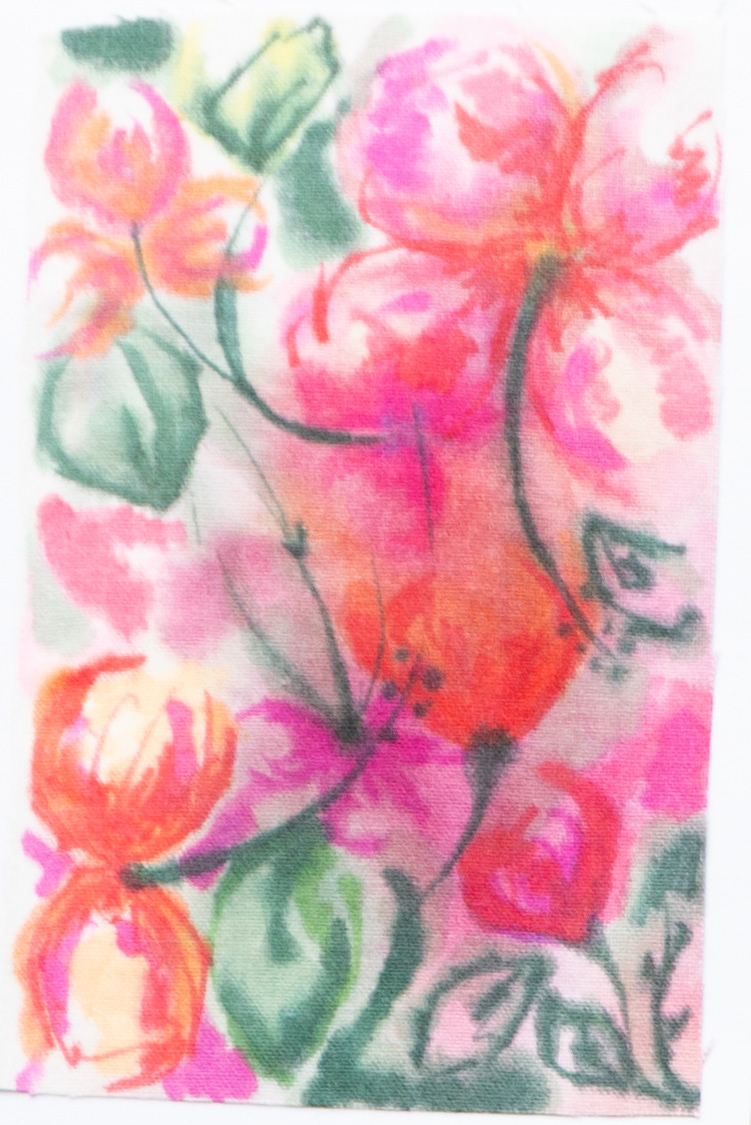
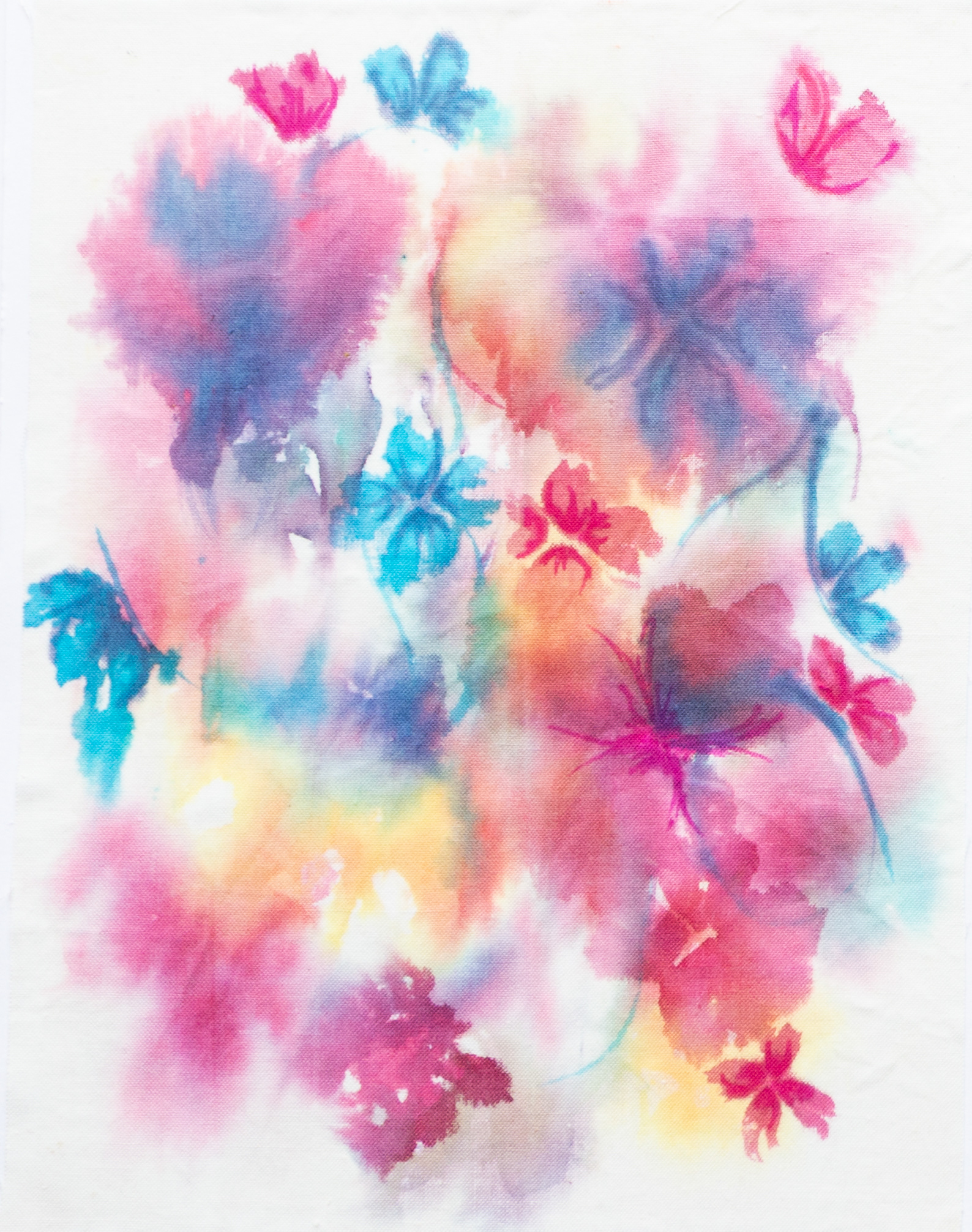
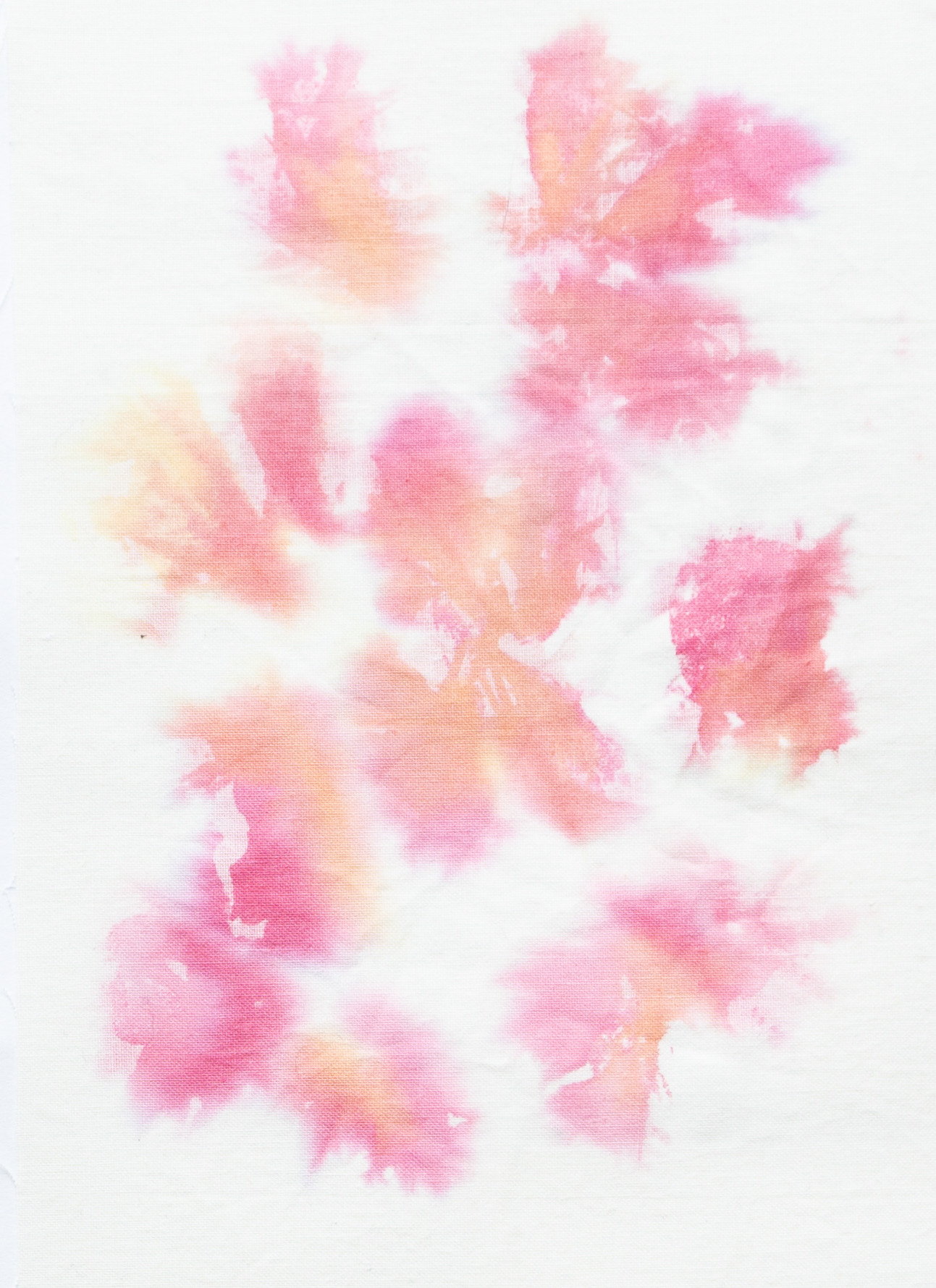
This page documents fabric dyeing experiments exploring how ink and water interact with different textiles to create organic floral patterns. I tested cotton and polycotton with various application techniques, such as spraying, soaking, and layering ink.
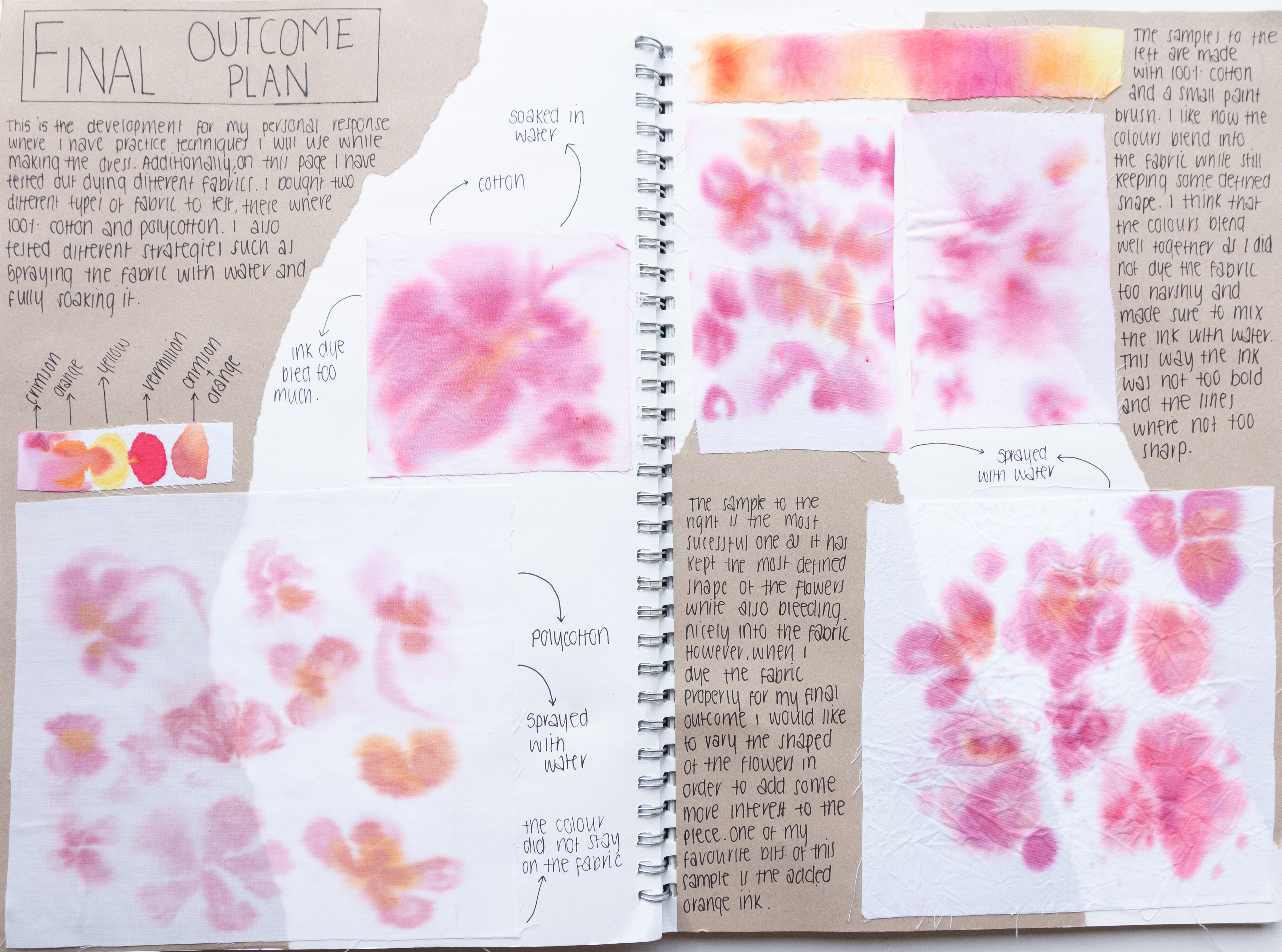
This sample explores fabric manipulation using chiffon, where I carefully burned the edges to prevent fraying while adding depth and texture. The layering of the fabric mimics the organic structure of petals, with pearl bead centres enhancing the delicate floral effect.
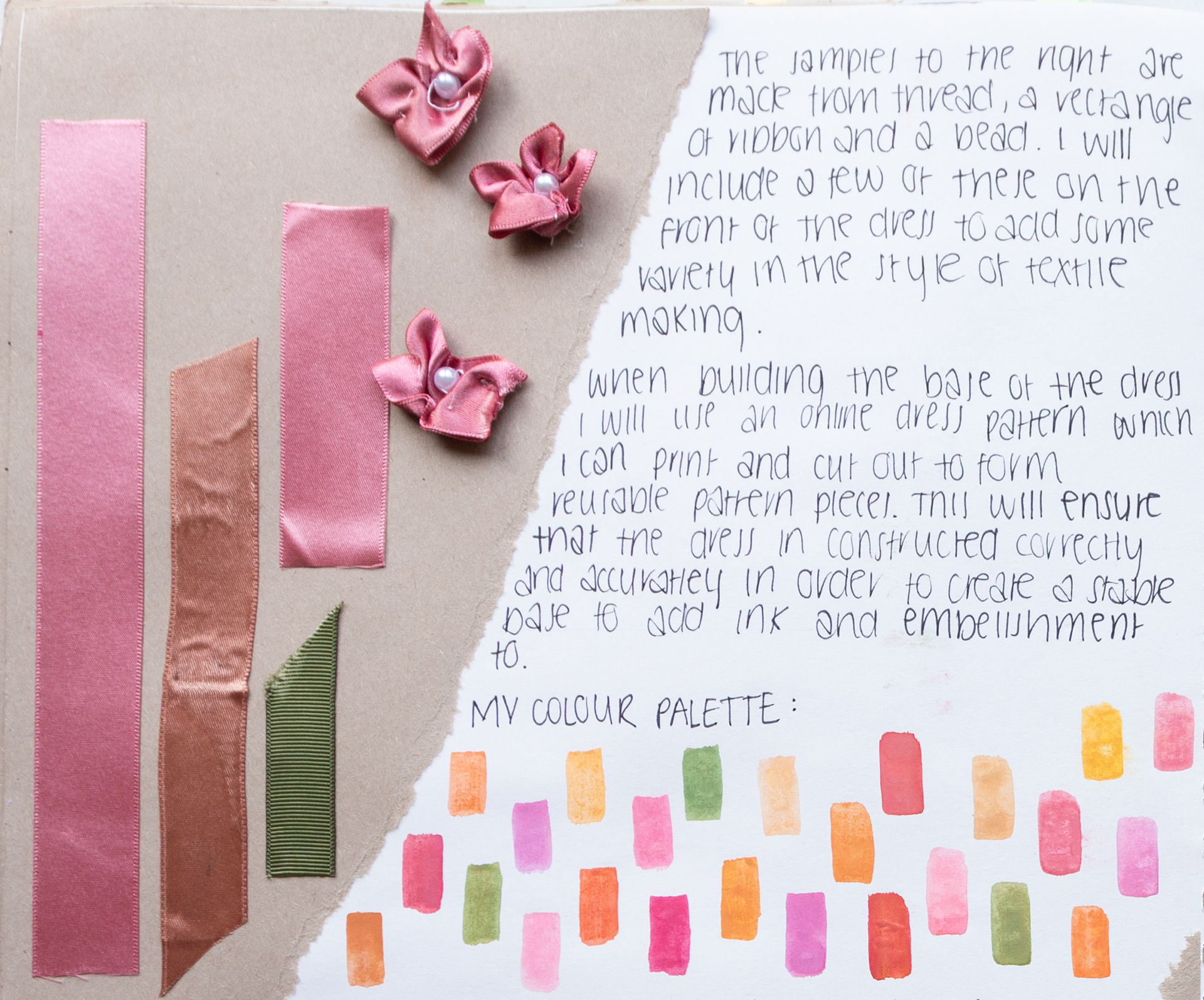
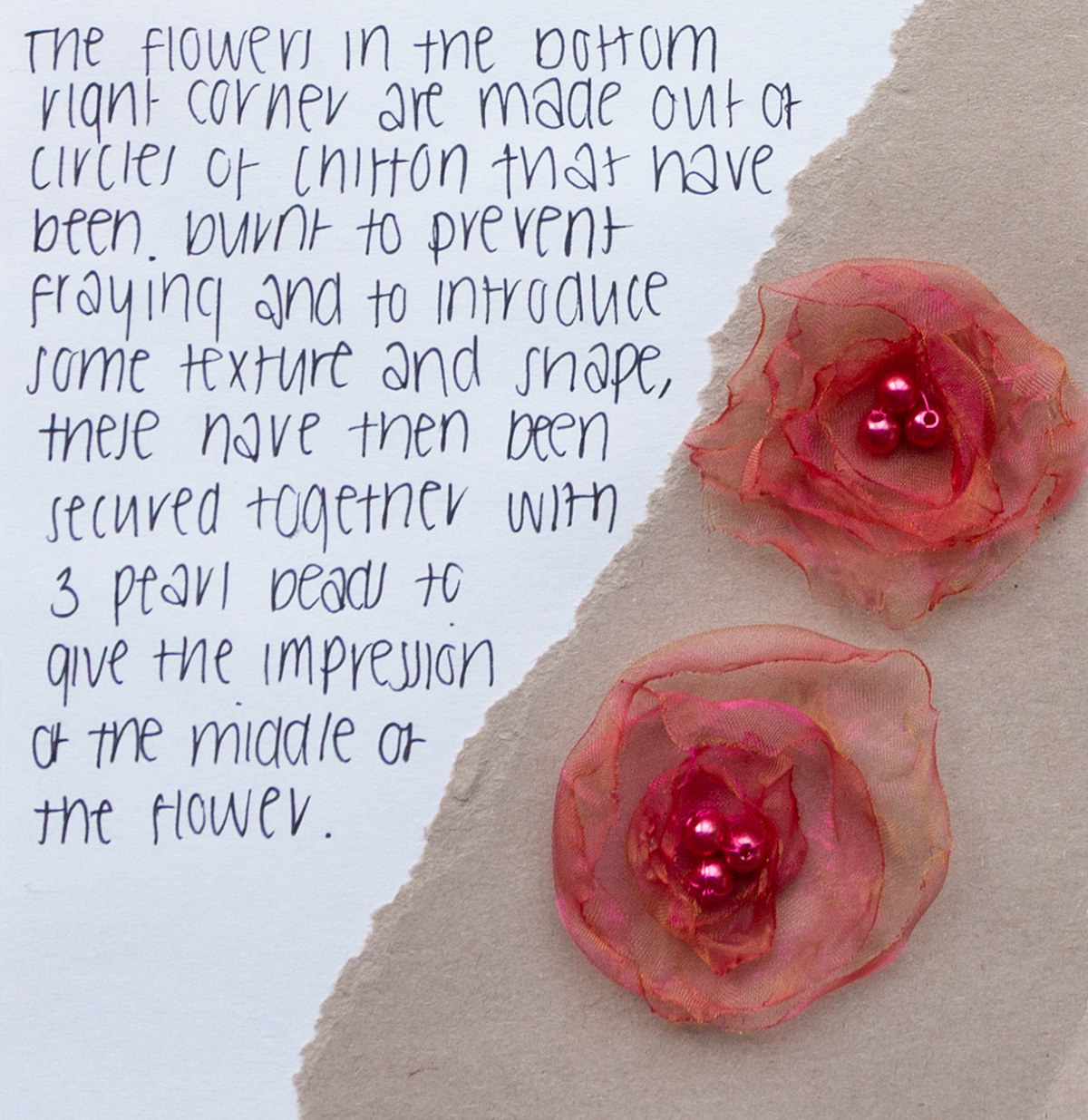
This final design explores organic movement in fashion, inspired by the natural blooming of flowers. The hand-dyed fabric creates a soft, blended colour effect, while the flared sleeves and flowing skirt mimic delicate petals in motion.
The final piece, design and development, explores fabric manipulation and textile painting to create a garment that mimics the natural blooming of flowers. The fabric was hand-dyed and painted using inks and a spray bottle to achieve a soft, organic effect. Chiffon flowers were layered and sewn in a cascading pattern, adding depth and movement.
I present more detailed photographs of the dress in the My best 10 portfolio section: https://rubysheldon.com/my-best-10
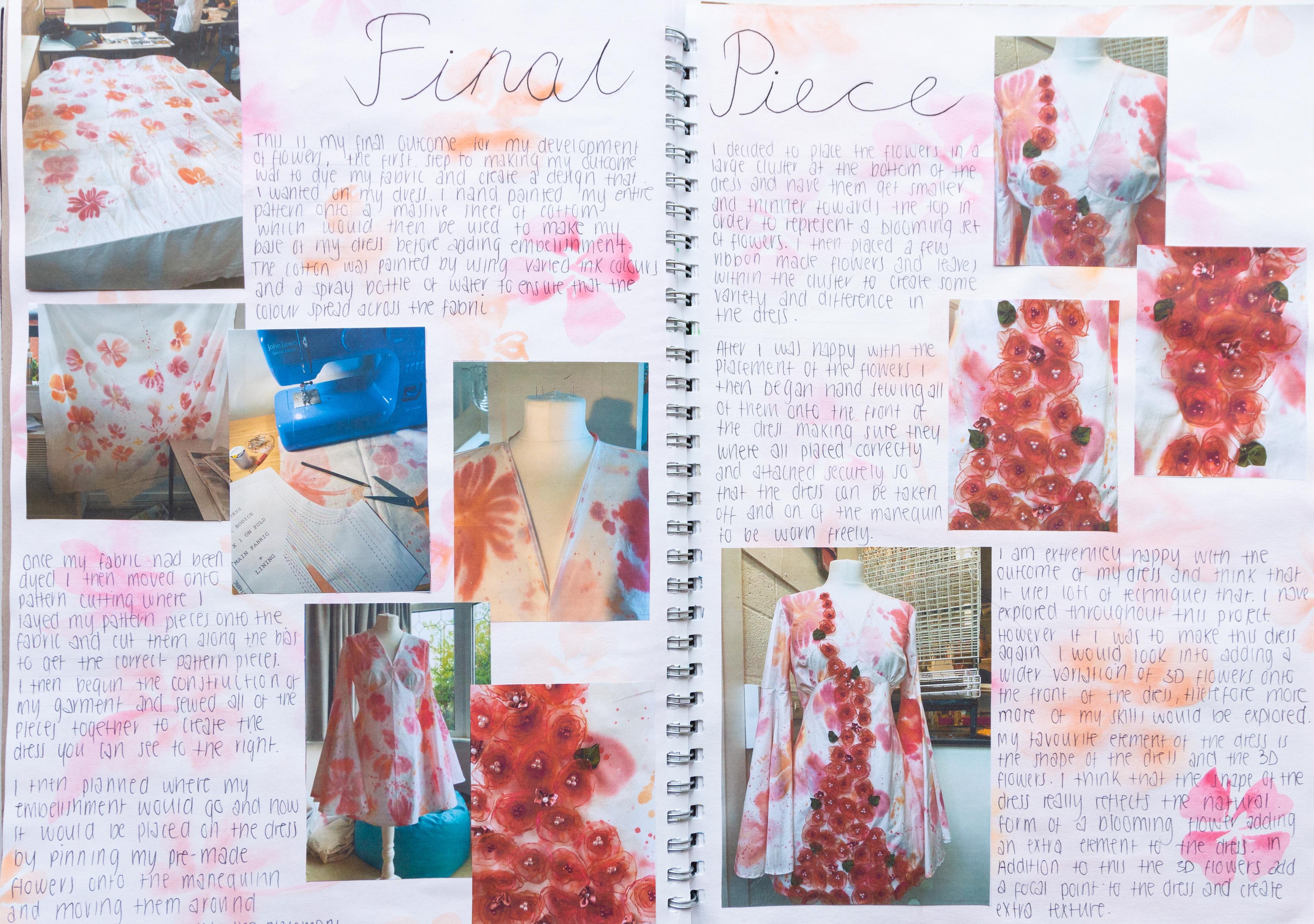
For my next final piece, I experimented with flower pounding. I captured the delicate textures and earthy tones of natural elements, reflecting their original colour and form.
Here are my natural dyeing experiments, using flower petals and plant-based materials (beetroot) to create organic fabric colours. By boiling and soaking textiles in the extracted pigments, I explored how natural dyes interact with fabric.
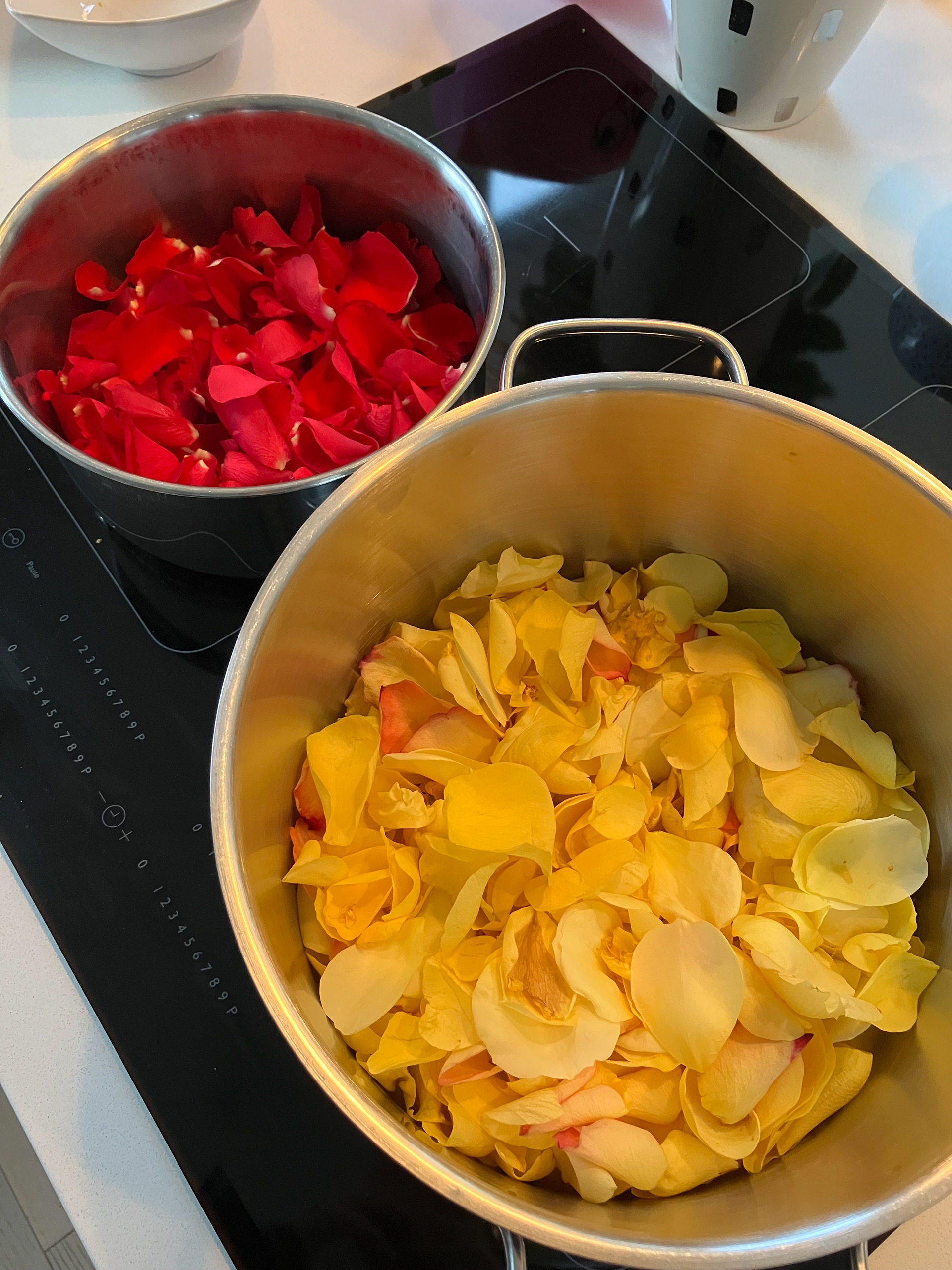
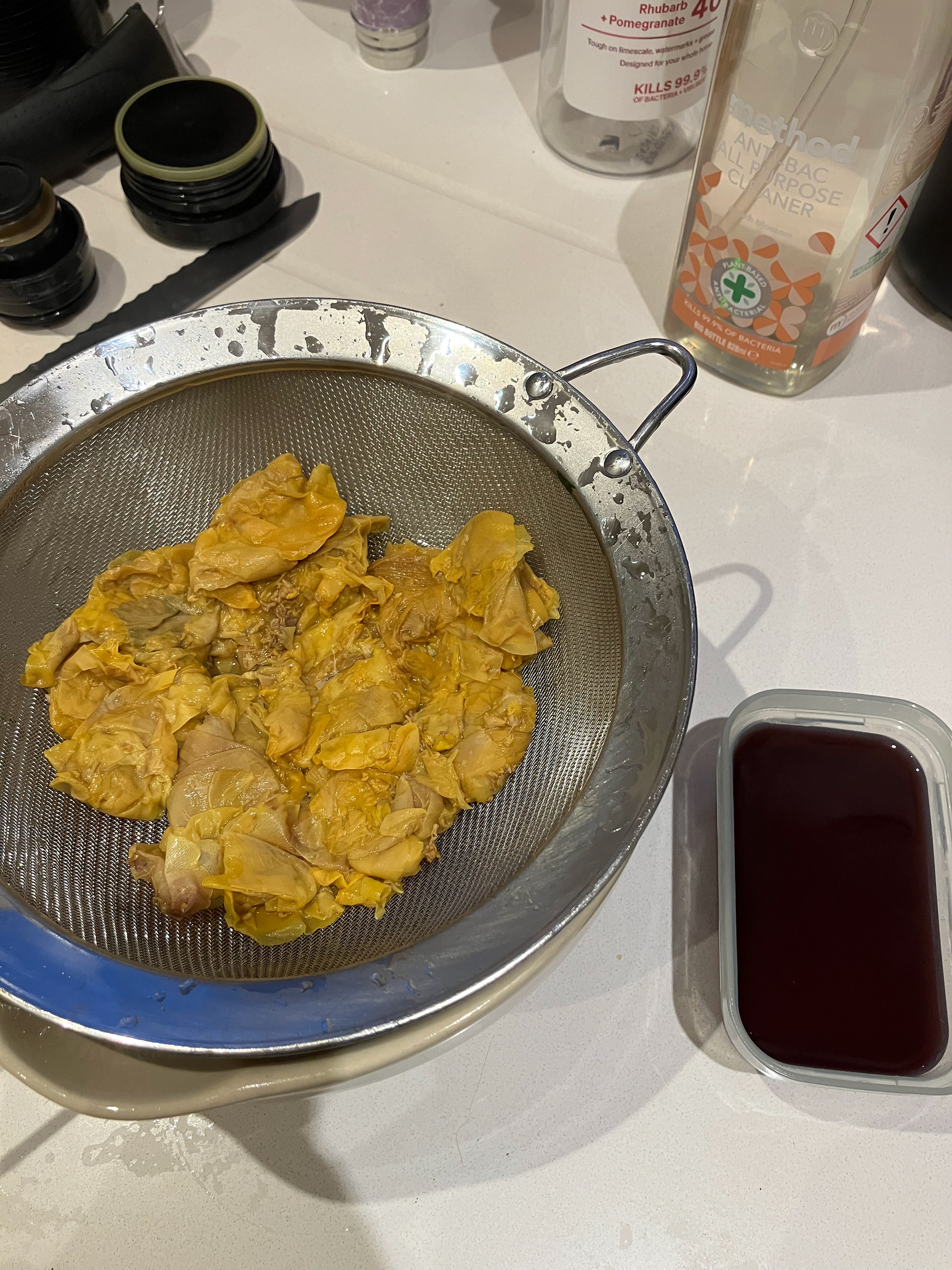
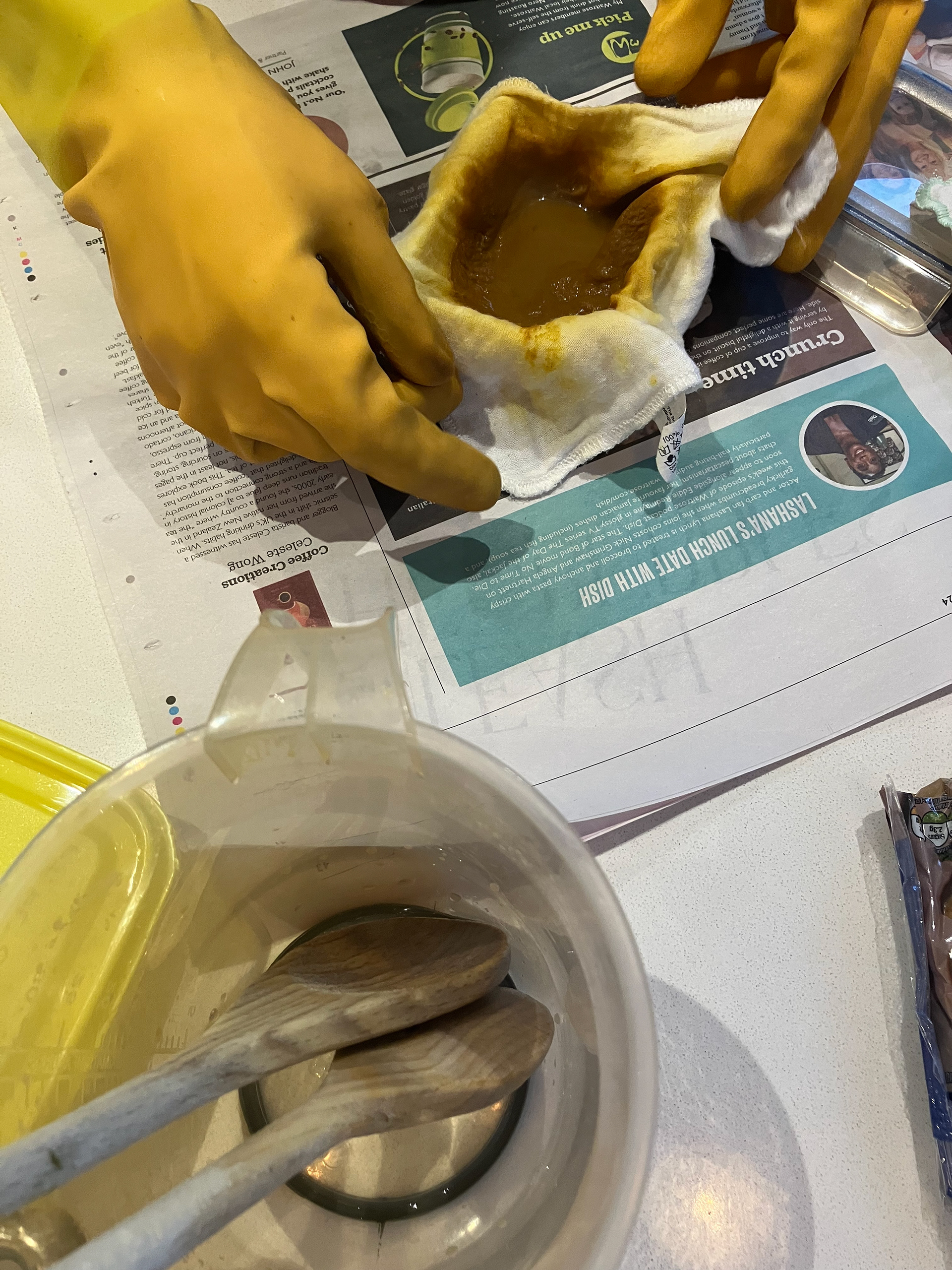
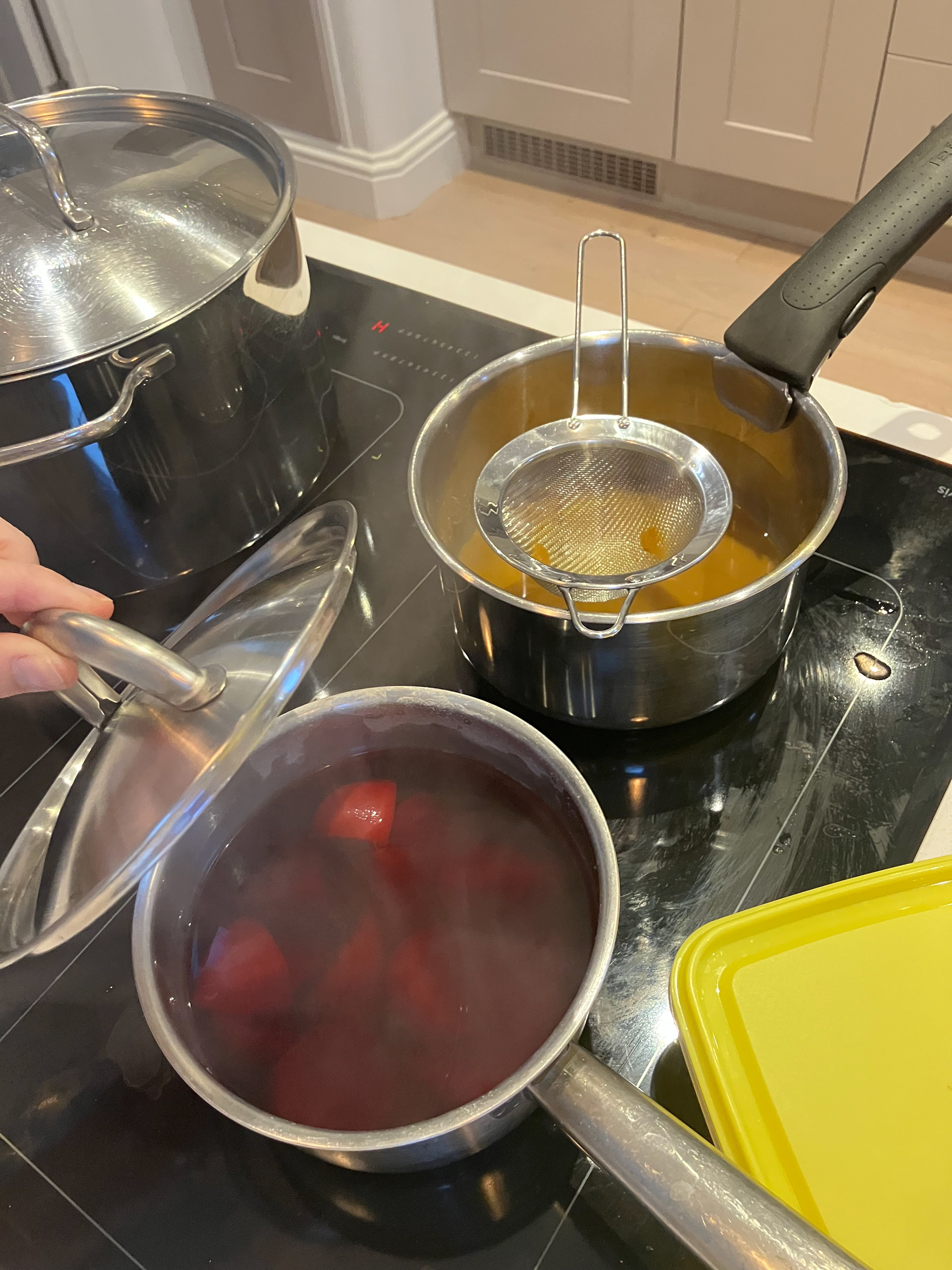
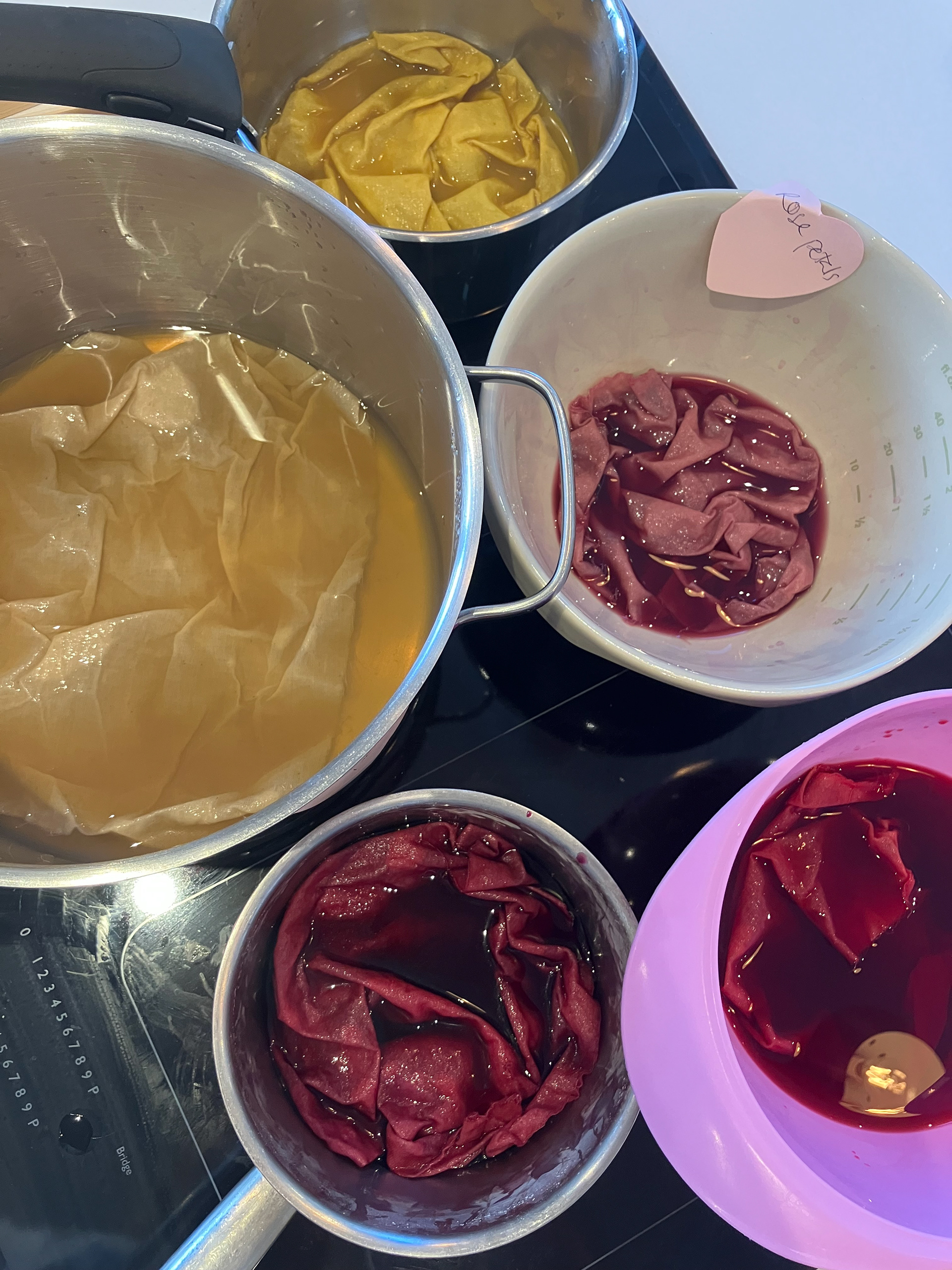
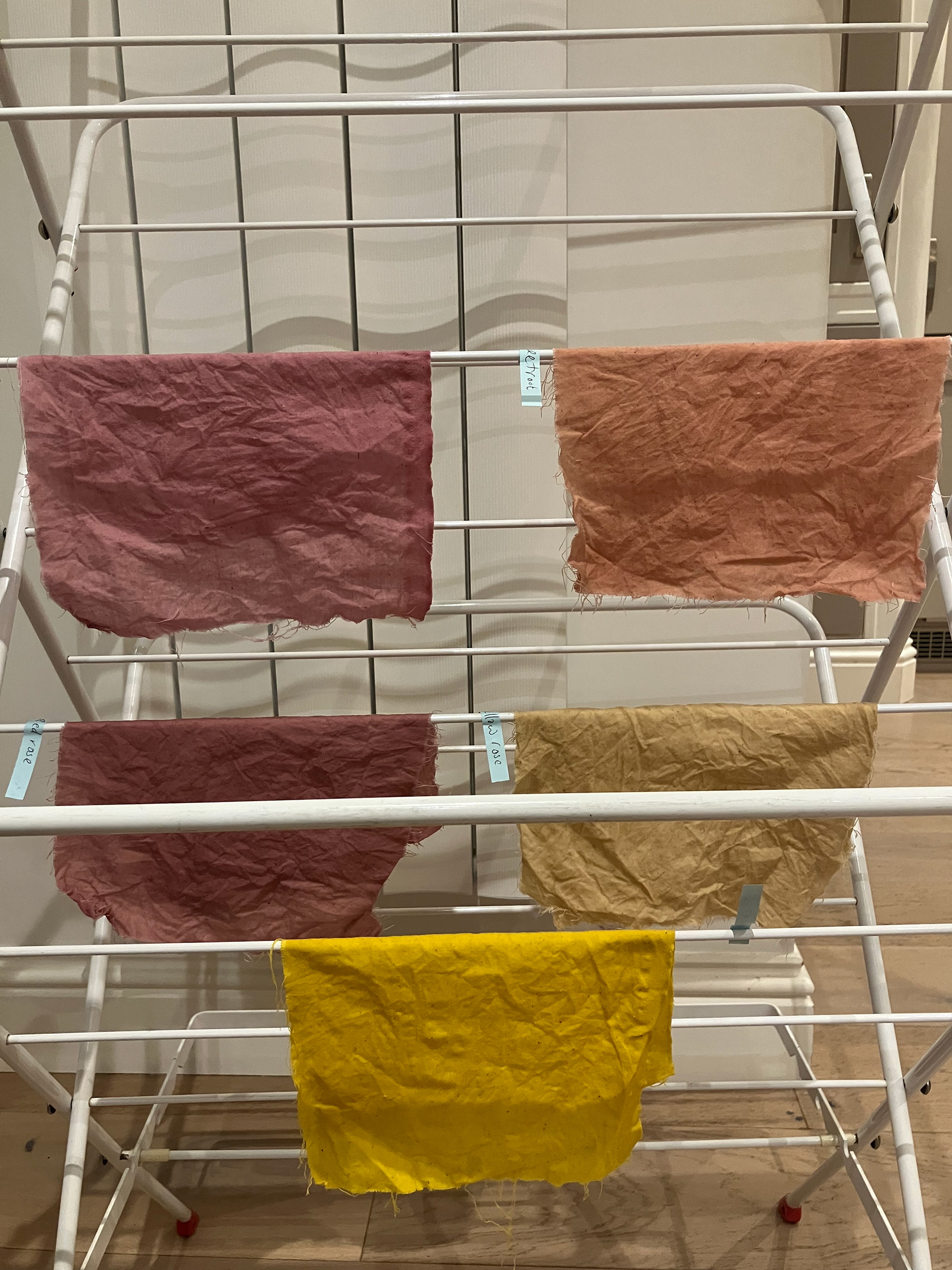
Here I was exploring pattern development through printmaking, using brusho powder, lino cutting, and fabric printing to create organic floral-inspired designs. By studying the natural formations found in flowers, I experimented with layering textures, carving detailed lino blocks, and testing different printing techniques to develop unique textile patterns.
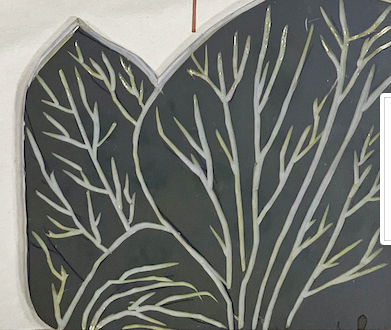
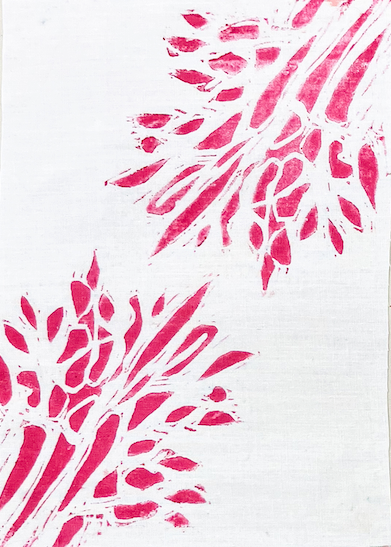
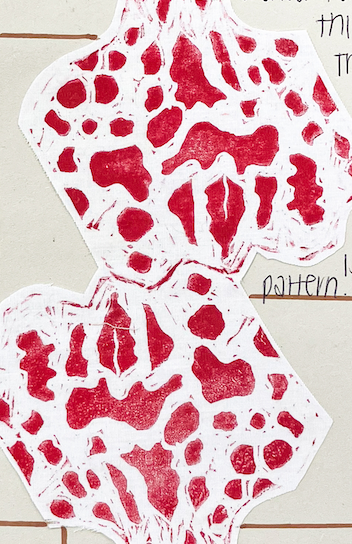
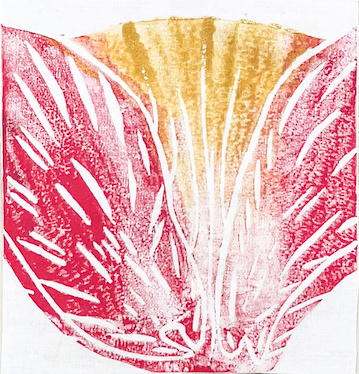
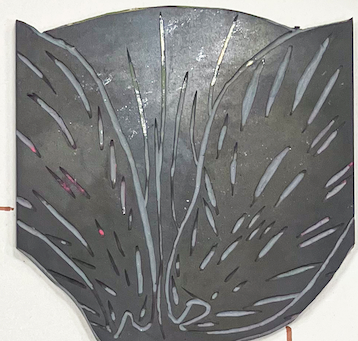
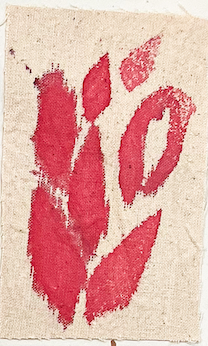
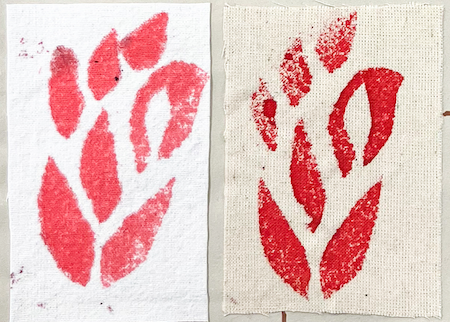
In the development of my final garment design, I was inspired by the organic structure of flowers and their natural symmetry. Through experimental sketches, material sampling, and textile manipulation, I explored ways to shape fabric into petal-like forms, creating volume and sculptural silhouettes.
The final construction process, incorporating natural dyeing, lino printing, and structural fabric manipulation. Using beetroot and rose petal dye, I hand-dyed fabric before applying lino-printed botanical patterns. To achieve volume, I reinforced layered fabric petals with wire supports, refining the structure through problem-solving and experimentation in garment shaping and textile techniques.
I present more detailed photographs of the dress in the My best 10 portfolio section: https://rubysheldon.com/my-best-10
My final garment with layered petal-like panels is reinforced with wire to achieve volume and movement, while rope-wrapped structural elements mimic floral reproductive structures.
The Inside Outside Dress
This mood board explores the theme of “Inside/Outside,” looking at the contrast between external appearance and internal structures, both in fashion and human emotion. I was inspired by designers like Alexander McQueen, who used anatomical imagery to challenge conventional beauty, and Jenny Saville, whose expressive portraits capture raw emotion and identity.
Observational practice of the human body using different mediums of charcoal, coloured pencils, biros and regular pencils.
Work inspired by Juana Gómez, the practice of hand embroidery on fabric using the anatomy of the nerves found in the face.
This page explores anatomy-inspired fabric samples, translating the textures and forms of blood cells and organic structures into textiles. Using a mix of hand embroidery, wax resist dyeing, free-motion machine embroidery, and quilting, I experimented with techniques to create layered, textural surfaces.
This sketchbook spread explores anatomical influences in fashion design, translating the body's internal structures into striking garment concepts. Through watercolour and fine liner observational studies, I developed designs incorporating organic textures, skeletal forms, and flowing layers.
This is the design page for my final garment for this project. The aim was to create a dramatic garment that portrayed aspects of the human anatomy. This design concept explores the body's inner workings through fashion, using fabric manipulation, embroidery, and beadwork to represent blood cells and veins.
This page documents the final process of creating my blood-inspired dress, focusing on fabric manipulation, dyeing techniques, and embellishment. I used a mix of hand-dyed fabric, beading, and embroidery to replicate the organic flow of blood vessels while ensuring the silhouette remained structured yet fluid.
I present more detailed photographs of the dress in the My best 10 portfolio section: https://rubysheldon.com/my-best-10